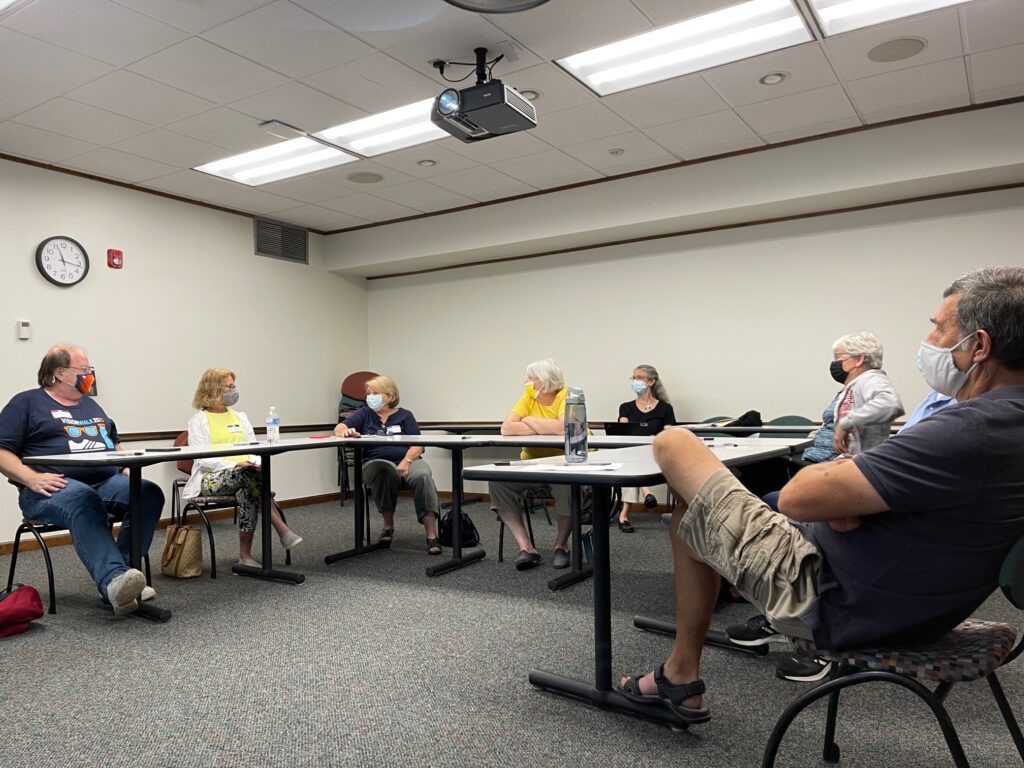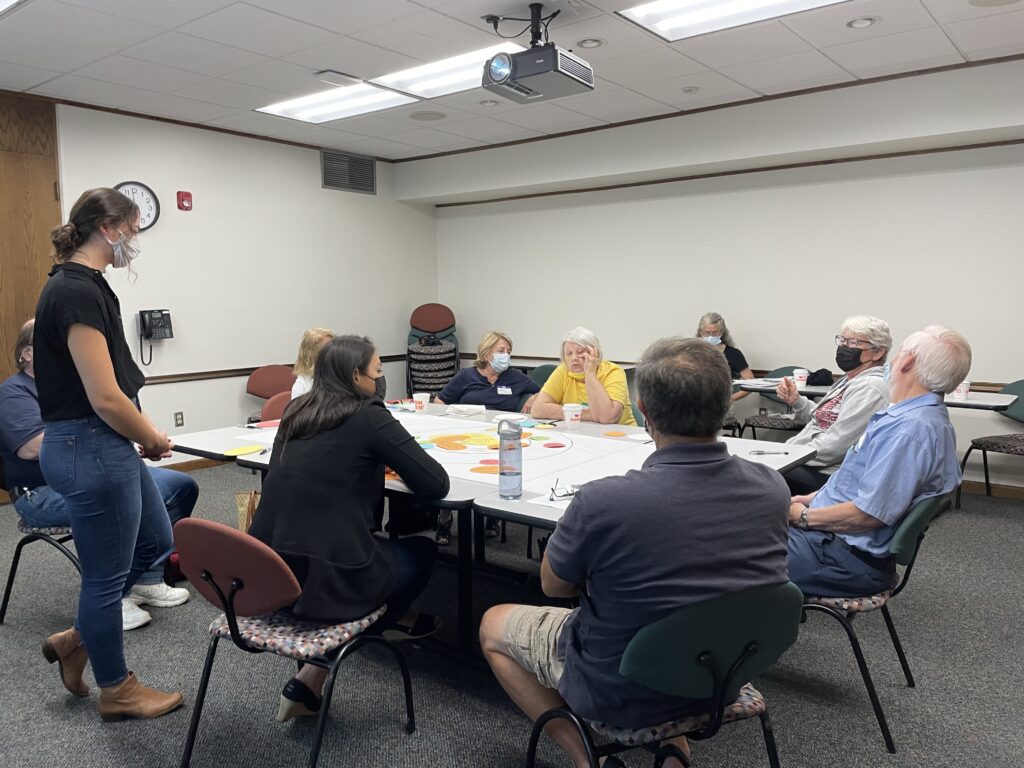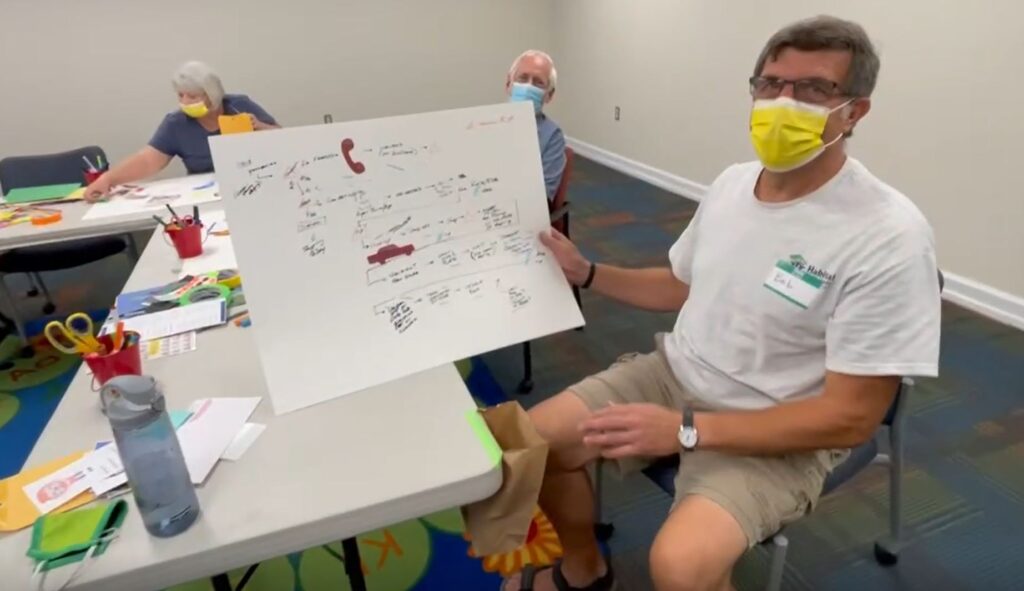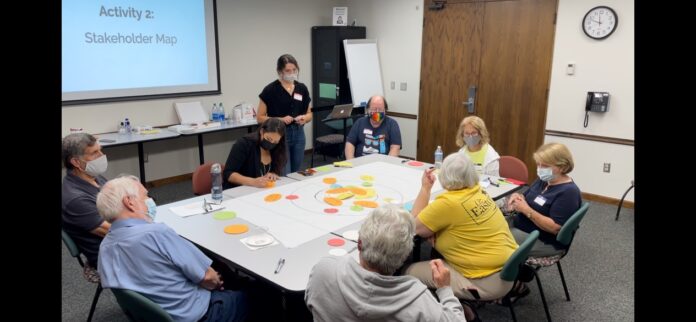While attending my son’s baseball game, I find myself conversing with one of my son’s teammate’s grandparents, Eileen. She shared with me that she found herself having to stop to sit during her evening walk a few days ago. She then smiles and says, “I have to remind myself that I’m not 40 anymore and I can no longer do my hour-long evening walk”. These words have sat with me for the past two weeks. Eileen is one of the few people who has had the ability to remember all three of my sons’ names after only meeting my children once. While she’s cognitively sharp, she, like many other older adults, is plagued with the biological effects of aging. While natural aging poses issues on one’s mobility, other problems such as social isolation, significantly since COVID-19, impact older adults and their overall well-being.
Working with Upper Arlington Commission on Aging (UACOA) and Age Friendly Innovation Center, a group of two other students and I gained privy to Upper Arlington’s solution to aiding in older adults’ mobility and social isolation issues with a concept they called a circulator. Their circulator will be a small bus transportation system for older adults in the Upper Arlington area. Their proposed solution for a circulator seems to address many of the issues surrounding social isolation and mobility issues.

Focus
This project’s scope will primarily focus on the demographic of older adults in Upper Arlington, OH. According to UCOA and the US Census, Upper Arlington is an affluent suburb of Columbus, OH, with roughly 33,000 residents, of which older adults make up 17%. A secondary focus will broadly be on issues surrounding mobility and social isolation within this demographic.
Research
UCOA provided information on first-hand research they conducted on older adults in April of 2021. Their study concluded the need for a local transportation system. The results from their research also provided other insights surrounding topics like many residents’ desire to age in their current homes; older adults, for the most part, have access to the internet and use technology; and residents who are not currently impacted on the effects of aging are still mindful of it being a future reality.
Along with UCOA research, a student-led survey surrounding questions on mobility, socialization, and technology was sent to older adults outside of Upper Arlington. The results from this survey aligned very similarly with the results from UCOA results.
First-hand research

After reviewing UCOA research results, two other students and I conducted two two-hour co-design focus group sessions. In the first session, we facilitated two co-design research methods through five questions centered around transportation and social isolation and through a stakeholder map. We allowed participants to answer questions they felt comfortable talking about. Answers ranged from personal experiences of their own to things they’ve witnessed from family members and friends. Some takeaways from this group interview were that most of our participants still drove but knew that they’d have to find alternative solutions in the future. They also talked about the importance of community and how having neighbors was important to them.

In the second half of the session, we created a group-led stakeholder map. Insights gained from this session were: that aging wasn’t the only factor impacting people with mobility issues
- Older adults still want to have fun and participate in outings
- Current transportation (Columbus bus -COTA) lacked consistency and wasn’t user friendly
- Technology plays an issue, there’s a learning curve
- People need a driver to assist with things like carrying groceries or attending doctor’s appointments that require a driver to be present.
Our second co-design session was conducted the following week, and within a two-hour session, we facilitated two co-designs. The first co-design was group-led, with participants being presented images of 6 different mobility ideas for older adults to use. These ideas ranged from topics surrounding robot delivery services, computer-operated cars to a group-powered bicycle. Insights obtained from this session were
- Concerns for weather
- Technology being too complicated
- Pain points surrounding technological learning curves
- Overall liability/safety concerns.
- Convenience and accessibility of use seemed to be the biggest underlining concerns.

During the second half of this session, we asked our participants to create a user journey utilizing five different user personas and asking them to take a persona of their choosing from home to a location of their choosing and back home again. Insights gained from this session were:
- Pain points happen before a person leaves their house.
- The overall decision-making process that occurs when you do not have a car is not only time-consuming but “frustrating” and “embarrassing.”
- Assessments to someone’s home need to be done to provide correct accommodations for transportation.
Second-Hand Research:
Conducting second-hand research allowed for a broader scope with exploring topics of; how other countries care for older adults, technology, and older adults; different types of bus stops, and how creativity can have health impacts on one’s overall well-being.
Looking into how other countries care for older adults, I slowly realized that issues facing older adults are not exclusive to America; however, how we culturally address these concerns greatly differs. Older Adults are respected in other countries, and younger generations are raised to care for older generations. While some approaches from other countries could be applicable in America, like changing the environment of nursing homes, changing cultural/behavioral mindsets here would require a huge undertaking.
Other explorations from this research honed in on the psychological effects of aging. Some companies address social isolation in nursing homes and turn to technology to connect older adults socially. I read several articles where artificial intelligence is used in nursing homes, one being where older adults are given a doll where nursing home employees can talk to older adults through the doll. I couldn’t help but think of how this approach treated the symptom of social isolation but did not really address the causation.
CONCLUSION:
While I admittedly came to this project having limited prior experience with older adults (I didn’t grow up knowing my grandparents), I soon realized that many of the things that impact older adults and social isolation wasn’t exclusive to older adults. If anything COVID-19 has shined a light on mobility and social isolation issues.
With that said, I want to bridge the gap between younger generations and older generations by creating opportunities for intergenerational connections. A significant hurdle in our society is the lack of education with older adults and the stigmas associated with getting older. One opportunity that I am interested in exploring is creating a bus stop that has a multigenerational interest.
Sources:




